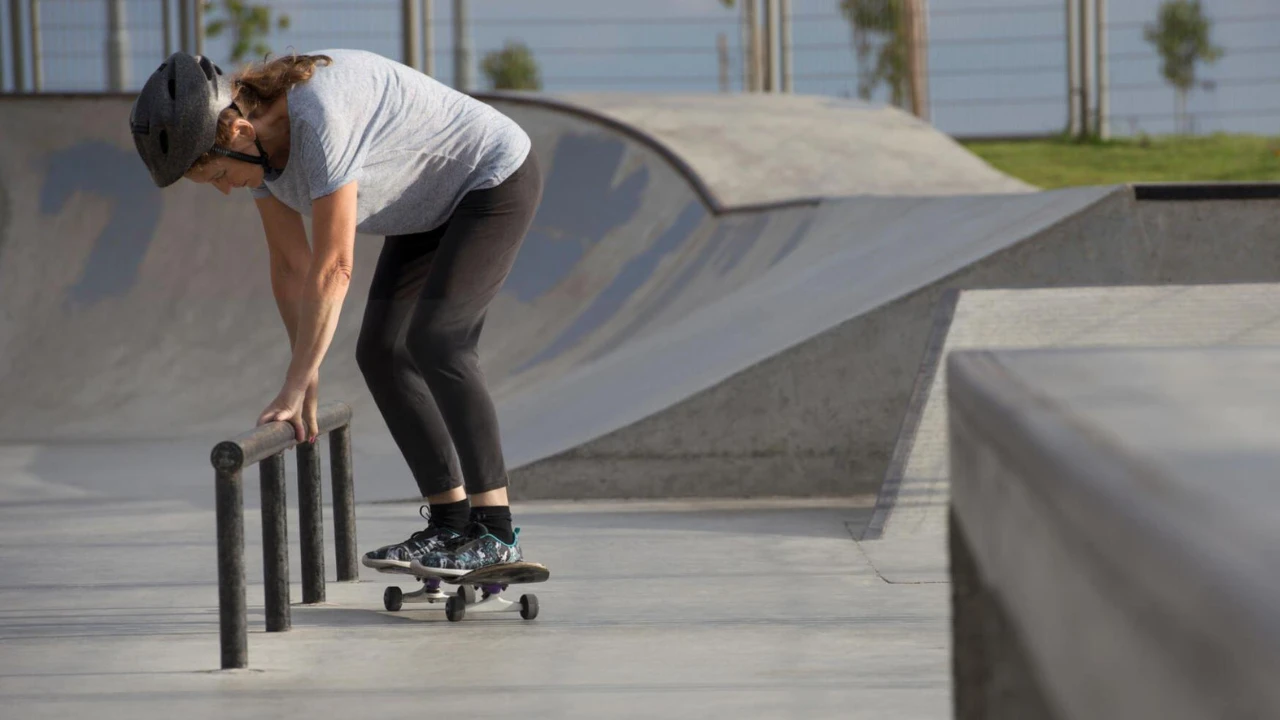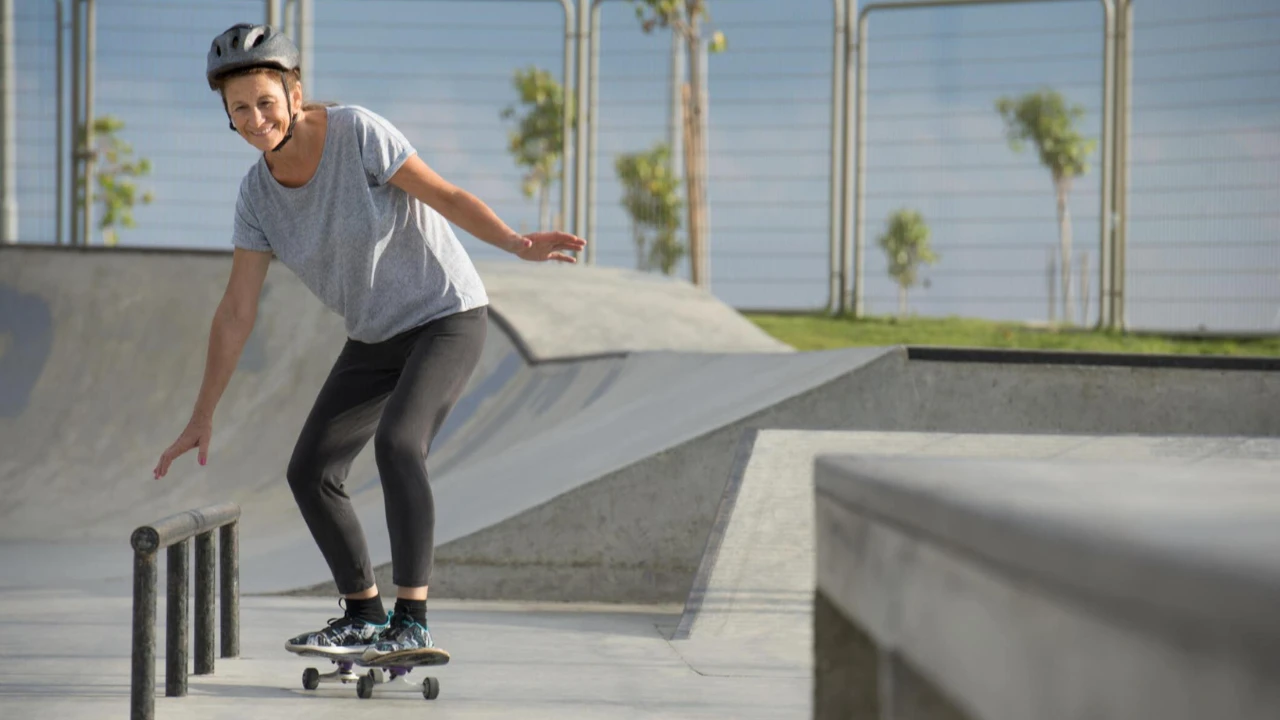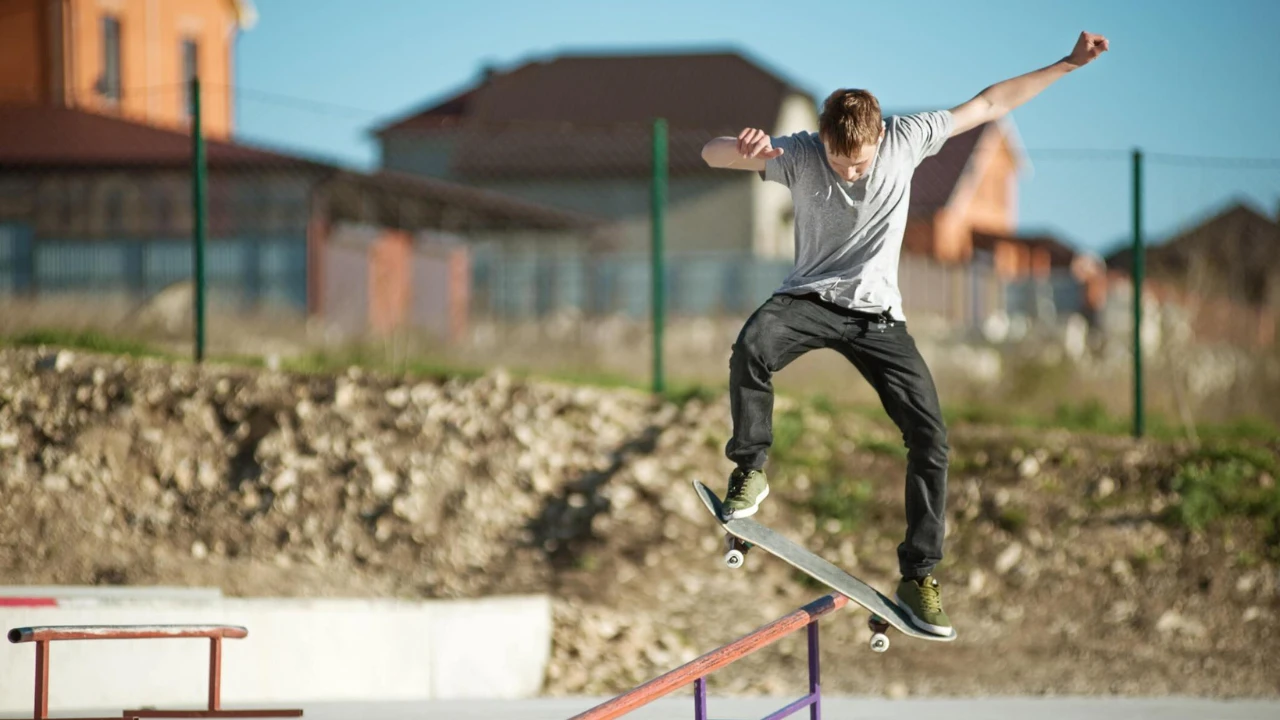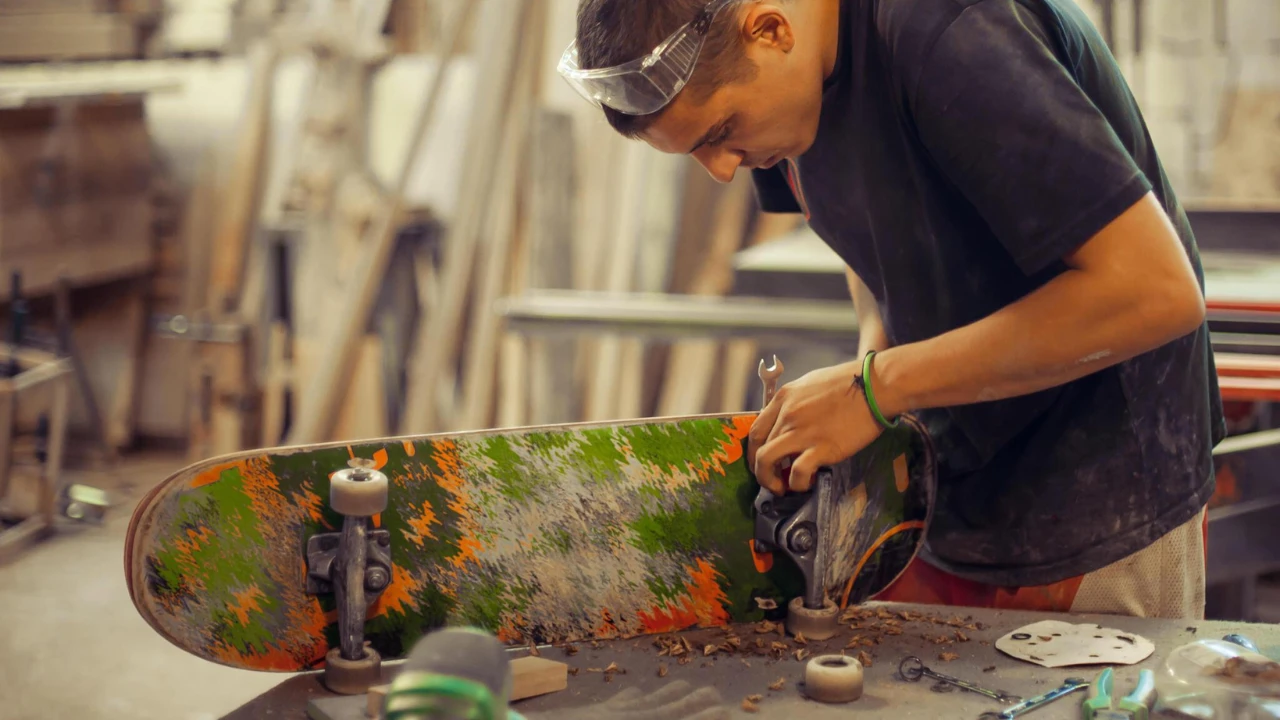Skateboarding for beginners is an exhilarating journey into the world of balance, skill, and self-expression. As you embark on this thrilling adventure, our comprehensive guide is here to pave the way for a seamless introduction to the basics. Whether you’re a complete novice or have dabbled a bit, this guide will cover everything you need to know to kick-start your skateboarding journey.
Skateboarding is more than just a sport; it’s a dynamic form of personal expression that challenges both the body and mind. From the thrill of cruising on your first board to mastering fundamental tricks, every step of the way is a unique experience. Let’s dive into the essential aspects that will make your initiation into skateboarding enjoyable but also safe and rewarding.
Table of Contents
Choosing the Right Skateboard: A Beginner’s Primer

Selecting the right skateboard is the crucial first step in your skateboarding journey. For beginners, understanding the different types of skateboards is essential to ensure a comfortable and enjoyable learning experience.
Skateboard Types for Beginners
When delving into skateboarding for beginners, consider the following types of skateboards:
1. Cruiser Boards: Ideal for casual riding and commuting. These boards are typically more stable, making them suitable for beginners.
2. Street Boards: Tailored for tricks and street-style maneuvers. As a beginner, you may want to explore street boards once you’ve gained confidence in basic riding.
3. Longboards: Known for their stability and smooth rides, longboards are great for beginners learning to balance and push.
Choosing the Right Size
The size of your skateboard matters for comfort and control. Opt for a deck size that matches your shoe size, typically ranging from 7.5 to 8.5 inches for beginners.
Budget-Friendly Options
Skateboarding doesn’t have to break the bank. Consider reputable, budget-friendly skateboard brands to kickstart your journey without compromising on quality.
When choosing your first skateboard, prioritize comfort, stability, and budget to set the stage for an enjoyable learning experience.
Essential Protective Gear: Safeguarding Your Skateboarding Experience

Safety is paramount, especially for those new to skateboarding. Before venturing into the exciting world of tricks and maneuvers, it’s crucial to equip yourself with the right protective gear.
Skateboard Safety Gear Checklist
1. Helmet: Protect your head from potential falls and collisions. Choose a helmet that fits snugly and complies with safety standards.
2. Knee Pads, Elbow Pads, and Wrist Guards: Shield your joints from impact during learning stages. Look for durable and adjustable pads to ensure a comfortable fit.
The Importance of Protective Gear for Beginners
Understanding the significance of safety gear is fundamental for beginners. It instills confidence, allowing you to push your limits while minimizing the risk of injuries. Falling is part of the learning process, and the right protective gear can make the experience safer and more enjoyable.
Budget-Friendly Options for Safety Gear
Investing in quality safety gear doesn’t have to be expensive. Many reputable brands offer budget-friendly options without compromising on protection. Prioritize gear that meets safety standards, ensuring your journey into skateboarding remains both safe and enjoyable.
By incorporating protective gear into your skateboarding routine, you’re not just safeguarding yourself but setting the stage for a confident and secure learning experience.
Understanding Your Skateboard: Navigating the Basics

Now that you have your skateboard and protective gear, it’s time to familiarize yourself with the fundamental components of your board. Understanding the anatomy of a skateboard is key to developing a strong foundation for your Skateboarding journey.
Anatomy of a Skateboard
1. Deck: The board itself, is usually made of wood or composite materials. Decks come in various sizes and shapes, allowing for different riding styles.
2. Trucks: The metal T-shaped components mounted under the deck that hold the wheels. Properly adjusted trucks contribute to stability and maneuverability.
3. Wheels and Bearings: Wheels provide traction, while bearings ensure smooth rotation. Keep an eye on the condition of your wheels and bearings for optimal performance.
4. Grip Tape: The gritty surface on the top of the deck that provides traction for your shoes. Grip tape needs an occasional replacement for optimal grip.
Proper Stance and Foot Placement
Establishing the right stance and foot placement is crucial for balance and control. Determine whether you are more comfortable with a regular or goofy stance, and practice positioning your feet for stability while riding.
By gaining a solid understanding of your skateboard’s components and how they contribute to your overall riding experience, you’ll be better equipped to progress confidently in your skateboarding journey.
Learning to Ride: Balancing Techniques for Beginners

Now that you’re familiar with your skateboard, it’s time to step on and start rolling. Learning to balance is the foundation of skateboarding for beginners and sets the stage for more advanced maneuvers.
Balancing Techniques
1. Stationary Balance Exercises: Begin by finding your balance while stationary. Stand on your skateboard with knees slightly bent and arms out for stability. Practice shifting your weight from heel to toe to get a feel for the board.
2. Rolling Balance Exercises: Once comfortable and stationary, start rolling slowly. Focus on maintaining a stable stance and use your arms for balance. Gradually increase speed as your confidence grows.
Pushing and Foot Braking
1. Proper Pushing Technique: Push with your back foot while keeping your front foot over the bolts. Practice pushing and coasting to build momentum.
2. Safely Foot Braking: Learn to slow down and stop using your back foot as a brake. Keep your weight over the front foot while dragging the sole of your back foot on the ground.
By mastering these foundational skills, you’ll develop the balance and control needed for more advanced maneuvers and tricks. Take your time with each step, and enjoy the gradual progression in your skateboarding abilities.
Basic Skateboarding Tricks: Unveiling the Ollie and More

With a solid grasp of riding basics, it’s time to delve into the exciting realm of basic skateboarding tricks. These maneuvers not only add flair to your riding but also enhance your overall control and confidence on the board.
Ollie – The Fundamental Trick
1. Step-by-step Guide to Mastering the Ollie:
- Start with a stable stance and bend your knees.
- Pop the tail of the skateboard by slamming your back foot down.
- Slide your front foot upward, leveling the board in the air.
- Bring your knees up towards your chest to achieve height.
- Land with both feet over the bolts.
2. Common Mistakes and How to Overcome Them:
- Addressing issues like uneven pops and lack of height.
- Tips for refining your sliding motion and landing with stability.
Kick Turns and Carving
1. Introduction to Turning on a Skateboard:
- Exploring the basics of kick turns for changing direction.
- Gradually progressing to carving for smoother turns.
2. Progressing from Basic Kickturns to Carving:
- Practicing kick turns in both directions.
- Building confidence for wider and more controlled carves.
As you delve into these tricks, remember that patience and practice are key. Start with the fundamentals and gradually progress, allowing your skills to evolve naturally. Embrace the learning process, and each successful trick will bring a sense of accomplishment to your skateboarding journey.
Overcoming Challenges: Building Confidence and Finding the Right Spots

As you advance in your skateboarding journey, it’s natural to encounter challenges. Overcoming these hurdles not only sharpens your skills but also contributes to the overall enjoyment of the sport.
Dealing with the Fear of Falling
1. Tips for Building Confidence:
- Gradual progression and setting achievable goals.
- Utilizing safety gear to minimize the fear of injury.
- Practicing in a controlled and comfortable environment.
2. Overcoming the Fear of Injury:
- Understanding that falling is part of the learning process.
- Focusing on proper techniques to minimize the risk of injury.
- Sharing experiences with other beginners to gain perspective.
Finding Beginner-Friendly Skateboarding Areas
1. Local Skate Parks and Designated Areas:
- Researching nearby skate parks suitable for beginners.
- Exploring designated skateboarding areas with flat surfaces and minimal obstacles.
- Seeking advice from local skateboard communities or forums.
2. Tips for Choosing the Right Spot for Practice:
- Ensuring a smooth and flat surface for initial practices.
- Gradually progressing to areas with ramps and features as skills improve.
- Being mindful of local regulations and respecting shared spaces.
By tackling challenges head-on and strategically choosing your practice areas, you’ll enhance both your skill set and overall confidence in skateboarding. Remember, every skater faces obstacles, and overcoming them is an integral part of the journey.
Maintenance and Care: Keeping Your Skateboard in Prime Condition

Now that you’ve conquered the basics and gained confidence in your skateboard, it’s essential to understand how to maintain and care for your equipment. Proper maintenance ensures a smooth and safe riding experience while extending the lifespan of your skateboard.
Keeping Your Skateboard in Top Shape
1. Cleaning and Lubricating Bearings:
- Regularly clean dirt and debris from bearings using a skateboard tool.
- Lubricate bearings with skate-specific lubricants for smooth rotation.
2. Checking for Wear and Tear on the Deck and Trucks:
- Inspect the deck for cracks, delamination, or signs of wear.
- Tighten or replace any loose or damaged trucks to maintain stability.
3. Replacing Grip Tape:
- Change grip tape when it loses its grip to ensure proper traction.
- Experiment with different grip tape styles for personalized aesthetics.
Routine Maintenance Tips in Skateboarding for Beginners
1. Establish a Regular Cleaning Routine:
- Wipe down the deck and trucks after each session to prevent dirt buildup.
- Clean grip tape with a grip gum or brush to maintain optimal traction.
2. Addressing Issues Promptly:
- Fix any issues, such as loose hardware or chipped deck edges, promptly.
- Regularly inspect and replace worn-out components to avoid performance issues.
By incorporating regular maintenance into your skateboarding routine, you not only enhance your overall riding experience but also extend the life of your skateboard. A well-maintained board ensures that you can continue to progress and enjoy the sport safely.
Conclusion: Embracing the Skateboarding Journey

Congratulations on navigating through the comprehensive guide to skateboarding for beginners! You’ve now equipped yourself with the knowledge and skills needed to embark on a thrilling and rewarding skateboarding journey.
Recap of Key Points
1. Choosing the Right Equipment:
- Selecting the right skateboard type, size, and protective gear.
- Exploring budget-friendly options without compromising on quality.
2. Understanding Your Skateboard:
- Familiarize yourself with the skateboard’s anatomy and components.
- Mastering proper stance and foot placement for optimal control.
3. Learning to Ride and Perform Tricks:
- Balancing techniques, pushing, and foot braking for confident riding.
- Introduction to fundamental tricks like the ollie, kick turns, and carving.
4. Overcoming Challenges:
- Building confidence by addressing the fear of falling.
- Finding beginner-friendly skateboarding areas for safe practice.
5. Maintenance and Care:
- Keeping your skateboard in prime condition through routine maintenance.
- We are addressing issues promptly to ensure a smooth and safe riding experience.
Encouragement for Continuous Learning in Skateboarding for Beginners
Remember, skateboarding is a journey of continuous learning and improvement. Embrace each challenge as an opportunity to grow, and celebrate your achievements along the way. Connect with local skateboarding communities, share your experiences, and learn from fellow skateboarders to enrich your journey.

